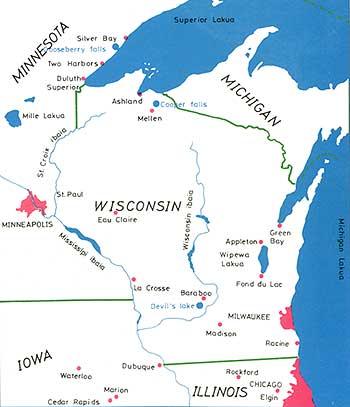Protected natural areas USA
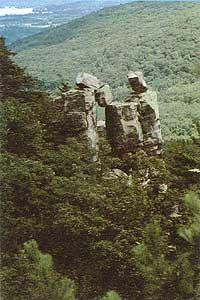
The Yellowstone and Grand Canyon protected spaces, known around the world, are within the category of National Parks. Your responsibility and management depends on federal power. However, there are eleven other protected areas under the responsibility of state and local authority, called State Park and County Park respectively. Many places are hidden in them and visitors can enjoy them.
In this article we will release three State Parks located near the Great Lakes. Two of them are in the state of Wisconsin ('Devil's Lake and Copper Falls') and the third in Minnessos ('Gooseberry Falls'). The three are beautiful and spectacular corners that offer a wildlife.
Devil's lake state park
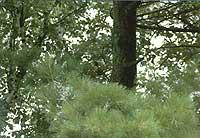
When he leaves the road he enters the road to Devil´s Lake, the visitor finds a big surprise. Wisconsin's large, straightforward roads become narrow, steep roads with sharp bends. The surprise becomes fascination when it leaves the curves and a beautiful lake of transparent water is placed before the view between two stone walls. After circling the lake shore for half a kilometer, you will reach the southern picnic area where, leaving the car, you can take a refreshing swim, at least in summer, before exploring the gurus.
The place more than that of the devil ( devil = demon) seems that of angels.
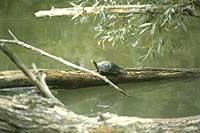
From a geological point of view the history of Devil Lake is very interesting. The lake is located on a hill region located near the Wisconsin River. These hills are very old and formed by quartzite (cemented sand). Formerly the whole region was covered by the sea. The sediments and sediments contributed by the rivers were accumulated and the sand first formed the sandstone and finally the quartzite.
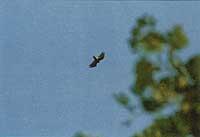
Later, when the sea receded, the quartzite was pushed up and formed two buttresses on the lake shore. On the contrary, the seas recovered and covered this region and filled again with sand and clay from erosion.
The sea receded forever and the Wisconsin River and its tributaries cleared the sediments brought by the sea leaving the quartzite again uncovered. The last chapter of this story occurred fifteen thousand years ago, when it touched the glaciation. Glaciers gave Devil Lake its current appearance. The glaciers gave a new channel to the Wisconsin River and thanks to it Devil Lake is now and not the river.

After these geological observations, you have to leave the picnic area for a visit to the park. On our visit we can take any of the marked routes and trails. However, all roads will take us through the walls of 150 m. The view from the edge of the ravine is very beautiful. Besides seeing the whole lake, there are the surrounding forests and, if you wait a little, you can also see the vulture flight.
From the edge you will enter the forest fascinated by the seen, and if you go attentive, you can enjoy the wildlife. The forest consists mainly of white bark birches, among which are maples, willows and a few oaks. The singing of the birds will accompany you throughout the tour.
Devil Lake is home to numerous animals. More than one type of birds nest in the park area. In addition to the aforementioned papagorra vultures, the noisy blue corner, the papagorri myrtle, the ventral bird, the winter txepetxa and all kinds of candles stand out. Among the reptiles are wild castanets, but with them you do not have to worry too much. Of course there are types of non-dangerous snakes and also turtles. Mammal species are around 30. Among them, the easiest to see by the visitor are squirrel, gray squirrel and rabbits.
If the visitor keeps his ears attentive and eyes open, there will be much to see.
Copper falls state park
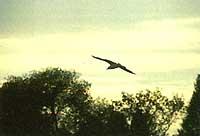
The Bad River, a bad river, is born on Lake Caroline, located in the Ashland, north of Wisconsin. On his short riverbed to Lake Superior, he found hard rocks formed by black slabs and dug the small canyon called Copper Falls, which drilled the water forces and its spectacular waterfalls. It mixes the black stone, the red clay and the whiteness of the foam, offering a charming show with the green of the forest.
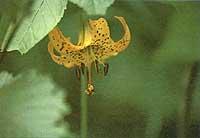
Copper Falls State Park is located about three kilometers of canyons and waterfalls. The place is very humid and is cool on the trails and paths that surround the riverbed during the warmer day of summer. The white bark of the birch dominates the forest. However, there are also some oaks and herons and, next to the waterfalls, the cedar. It is not surprising to find some yellow mushroom on the edge of the road. In summer life in this fertile land is very intense and simple. In winter, however, the snow will cover everything for months and many living beings will face the temperature below zero plunging into the lethargy of the lethargy.

When the leaves are green, we use the singing of birds as background music in the ears and the "tap-tap" that the bird makes in the trunk of the trees will remind us of the rhythm of the percussion. We will normally hear more than see the masters of this wonderful orchestra.
However, the brooches that sound engines will be seen more often and their precious ranges of colors will be engraved on the retina. At dusk, the beak of frogs will prevail and conquer the kingdom of the moon. You will not see or hear other animals except for a few seconds at the close of the forest. However, they are there and you can see the footprints of the deer on the trail you follow and the signs that the raccoon left in its nocturnal displacements approaching the river bank.
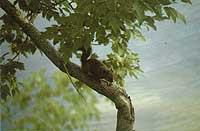
The show is beautiful in Copper Falls. The river can be almost eleven hours watching the jumping fashions that water makes on its path dug into the stone for millions of years. The sound of the water and the abundance of bird songs (from the harmonic singing of the thrush to the torn transport of the candles) are mixed. The trunks of trees dragged by the running water remind us of the canos of the Indians who once circulated through these waters.
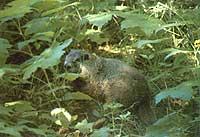
When he approached the first pale face, Txippewa skins lived. Their ancestors, over the centuries, removed pure copper from the surrounding deposits to make weapons and tools. In the park there are remains of this copper culture.
The first Europeans arrived a hundred years ago. Captain John Tyler was the first and the Txippewa Indians taught him this territory in 1871. The whim of the Larruzuri is something known and the idea arises of exploiting it with the knowledge of the territory of Copper Falls. At the end of the last century and beginning of this century there was a copper mine in the current area of the park. They had to leave the site due to their poor performance.
Gooseberry falls state park
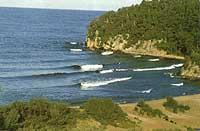
We left Wisconsin and headed to Minnesota to visit the last protected area. However, we will not leave the area of Lake Superior, Gooseberry (arakatz euskaraz) is located right on the edge of Lake State Park. This park has a charm that the other two do not have. Immersing yourself in a dense forest, perhaps the engine of this charm is to hear the timbres of seagulls.
The Gooseberry River pours its waters into Lake Superior and at its mouth is one of the most important nesting territories of the argenic gull. In it, hundreds of seagulls nest and breed. The infamous timbres of the gulls break the harmony of the song of the basatxori.
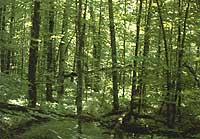
Around the mouth, the Gooseberry River has developed five waterfalls around which a park has been organized in which a lot of wildlife is concentrated, from large and fearsome black bear bears to the end of small insects of a thousand shapes and colors. Among them are birds, raccoons, marmots, blackberries and winter chepetxas. But the king of the park's animals is the deer deer. The imprint of his feet can be seen marked in the mud of roads and trails. It will be more difficult to see the author of the imprint. Hidden in the light darkness of the forest, it is difficult to perceive the deer and panic towards the man makes him escape. The visitor who sees a brown spot running between birches can be very happy.
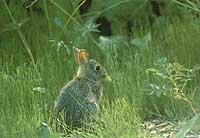
The Gooseberry River has long been known to European heirs. In 1670 the first news was collected. The name is due to the French explorer Shur des Groseilliers. However, until 1870 it was not exploited by the white man. It was then that the first fishermen started working in these areas. Then, around 1890, aizkolaris were followed and the business of the forestry industry became large throughout the region.
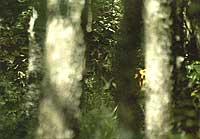
The companies built factories at the mouth of the river and the trees planted in the forest through two trains were taken to sawmills. White pine had completely disappeared in the early 1920s as a result of intensive forest practices and fires. (Good example of human disaster!) Forestalists abandoned the raw material. It was then, in 1937, that he achieved Goosebrry's status today.
If the ancient giant white pines have not yet grown, the forest is closed and beautiful (how prosperous and fertile nature is!) In it the heron, birch and young white pines are mixed.
To finish
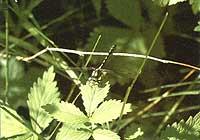
We conclude this brief visit to the protected natural areas of the USA. After seeing or learning new things it is convenient to slowly dare what you saw and learned and draw conclusions if possible. And after visiting these parks, we have come to the conclusion that to organize an adequate protected environment only two things are necessary: a beautiful landscape and a WILL. The first is still abundant in our country, the second...
Buletina
Bidali zure helbide elektronikoa eta jaso asteroko buletina zure sarrera-ontzian




